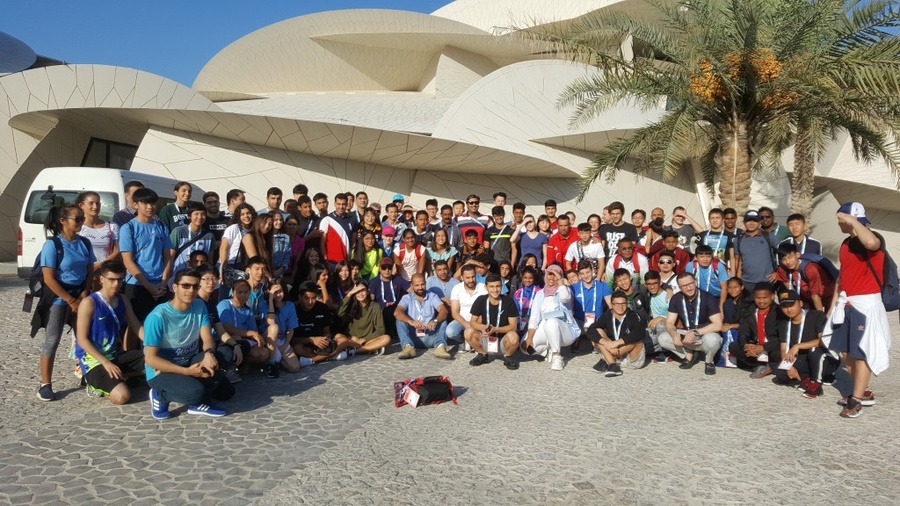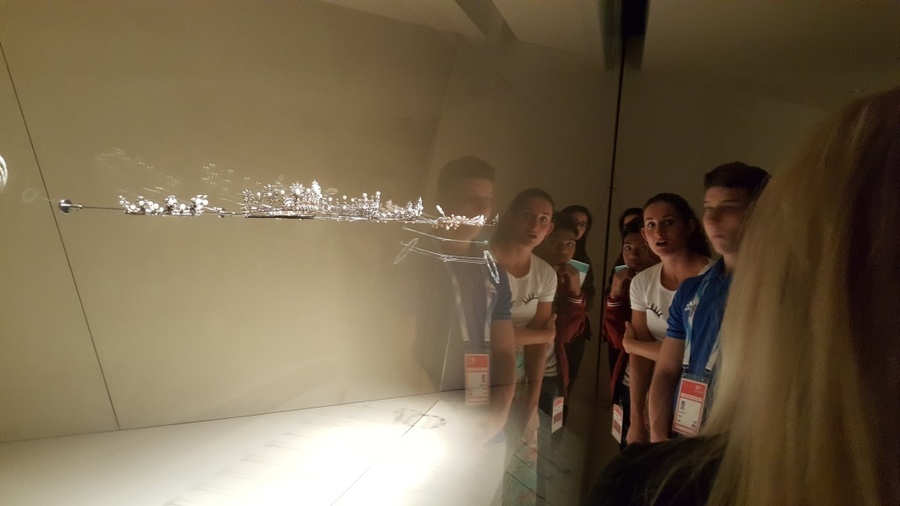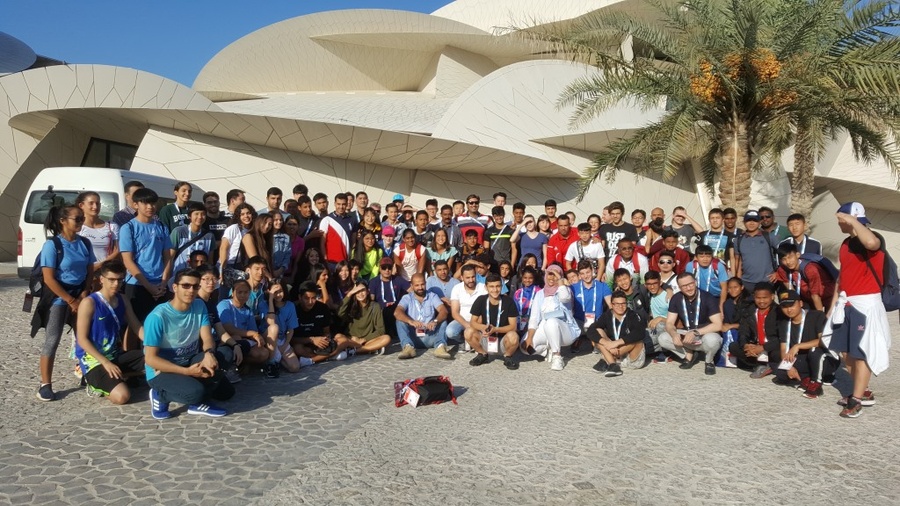Doha, Qatar, November 12, 2019: From dancing in the aisle to browsing through artefacts at Qatar National Museum, Pierre Lafontaine is trying to lead by example and show the 66 young swimmers at the OCA/Olympic Solidarity Swimming Youth Camp that life is not all about sport. The course instructor at the nine-day camp showed his other side as the 33 Asian National Olympic Committees participating in the camp enjoyed an excursion away from the Hamad Aquatic Centre on Monday afternoon to visit the national museum which gives voice to the unique story of Qatar and its people. “Culture is important, especially learning the cultures of other people. This camp is not all about swimming. Part of my role here is to grow good people, not just swimmers and this visit to the museum is key,” says Lafontaine as he tours the sprawling complex in the company of the athletes and coaches. “It is interesting to see the history of Qatar and its people. How many of these kids will come back to Qatar, or go on to make it big on the international stage. But if they can all appreciate the culture of others, and respect it, then this camp will have been a success,” adds Lafontaine, former head coach of Canada’s Olympic swimming team. The museum, built in the shape of the local desert rose, opened just six months ago, and Lafontaine tells his charges that they are the first swim team to visit. “These last few days we have been talking about being first at something, well here is a start,” smiles Lafontaine, appointed by FINA to run this first youth swimming camp run by the OCA in conjunction with Qatar Swimming Association and Qatar Olympic Committee. Inside, Pino Sayasone, a 13-year-old boy from Laos, is transfixed by the rich artefacts including the world’s most expensive carpet, the Pearl Carpet of Baroda which was commissioned by an Indian Maharajah in 1865 to give as an offering to cover the Prophet’s Tomb in Medina. With more than 1.5 million pearls stitched into it, plus other precious stones like emeralds, rubies and sapphires, Sayasone’s eyes widen when he hears that it was bought in 2009 for US$5.5 million – the Maharajah’s wish never materialised as he passed away before the donation could be made and his family kept the treasure. “This is a nice story and it is good to learn about it,” says Sayasone. Italian Eleonora Babini, coach of Kuwait, is also left impressed by how a young nation like Qatar has showcased its heritage and history in a must-see stopover for visitors. “I come from a country whose history goes back thousands of years. Qatar, in contrast, is relatively new. It only gained its independence in 1971. Yet what I saw today has opened my eyes to a new culture. It is good that we came here today and spent some time outside the pool. Visits like this make everyone come together,” says Babini. The two-hour visit to the heart of Qatari national identity ends in the bus ride back to the team hotel. Shakira’s ‘Waka Waka’ is belting out on the PA system. And Lafontaine is in full flow as he dances in the aisle much to the glee of his young audience. The song says ‘This time for Africa’. Perhaps it should be Asia.
OCA Youth Swimming Camp gets a taste of Qatari culture



